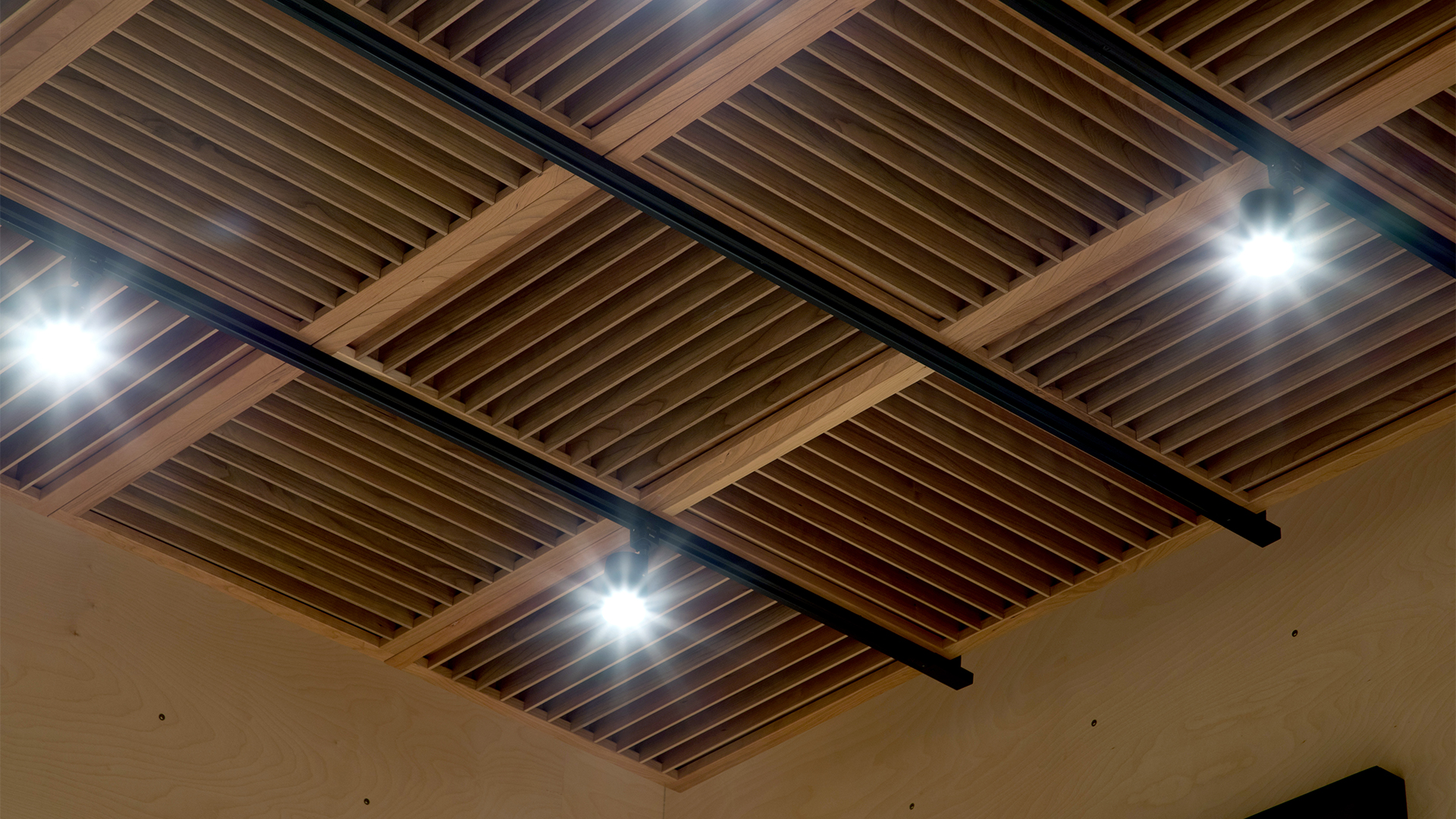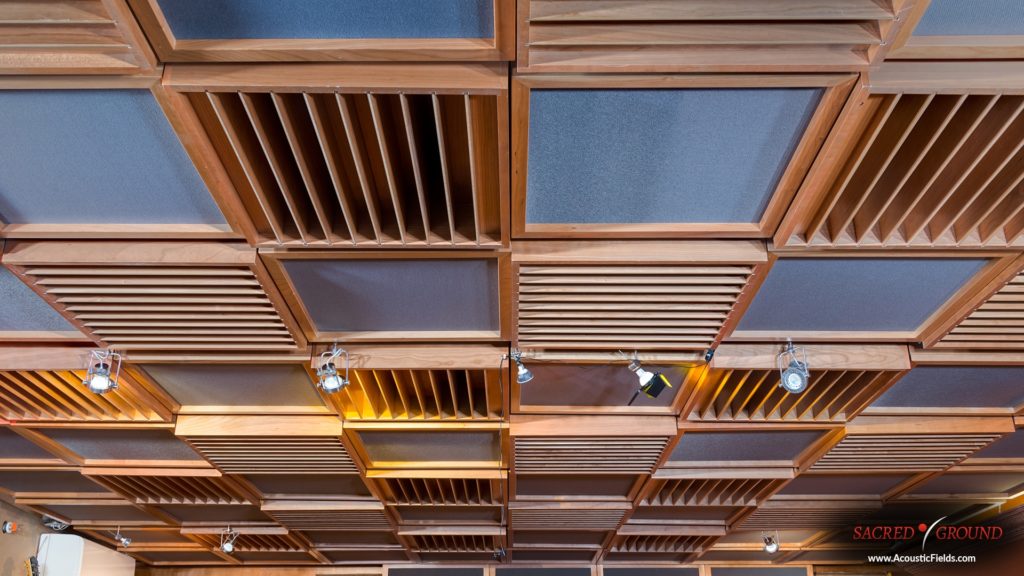
A ceiling acoustic diffuser is one surface area that can be treated with diffusion. Diffusion is a technology to make a small room sound larger. Using a ceiling acoustic diffuser will if properly applied will go a long way to creating a greater acoustical distance than the existing boundary dimension will allow for. The floor to ceiling dimension in any small room is usually the smallest of the three dimensions.
The smallest dimension usually produces the greater acoustical issues when it comes to low frequency pressure management along with middle and higher frequency reflection issues. The reflection from the ceiling and floor are the first reflections to interfere with the direct sound from our musical sources. The direct sound is the sound that travels from source in a “straight” line to the listener. All room sound is a combination of direct and reflected energy.
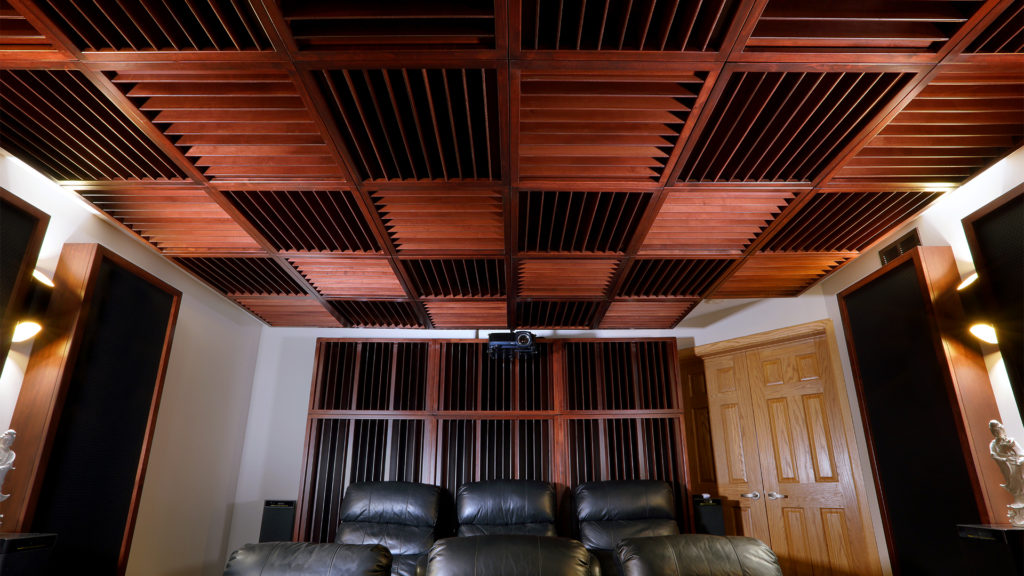
Quadratic Diffusion
The only true ceiling acoustic diffuser is a diffusion technology termed quadratic diffusion. Quadratic diffusion offers a predictable and consistent frequency response of coverage along with the ability to custom design the frequency response to match the distances involved within your usage. A quadratic diffuser is a series of wells or troughs that are at different depths but the same width. The depth of each well aligns with a certain octave band which contains 8 notes.
The calculation of the well depths is determined by a complex formula that is based within prime numbers. The lowest octave band that is diffused is the deepest well. The depth of each well is based upon quarter wavelength principles and the width of each well is based upon half wavelength. At www.acousticfields.com, we can assist you with this process. We have been using quadratic diffusion for 35 years.
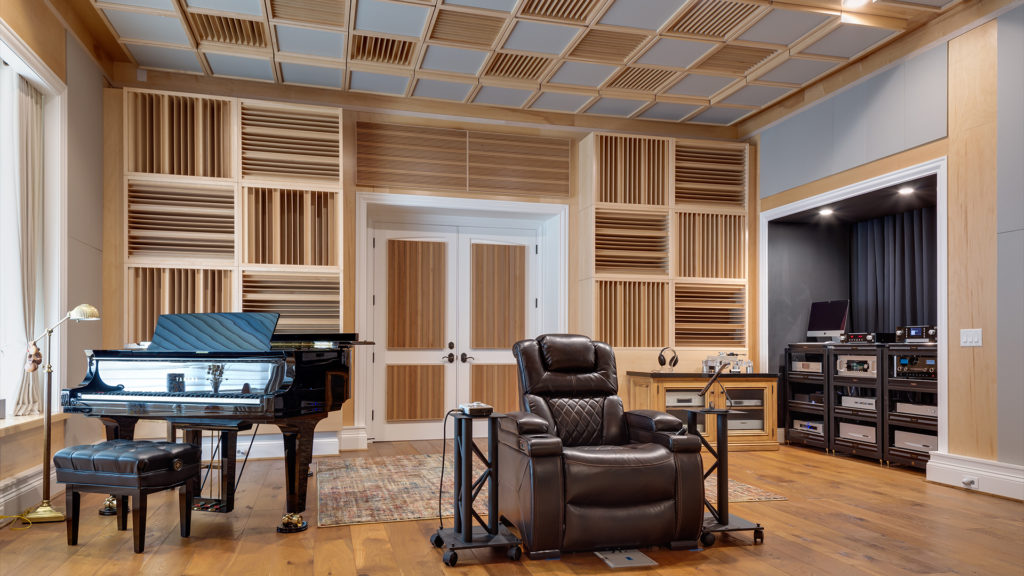
Every quadratic diffuser has a frequency response. Quadratic diffusers have a frequency response just like a speaker does. You must be careful about the distances from the diffuser to your ears. In any ceiling acoustic diffuser installation, you must make sure you select the proper prime number sequence to deal with distances. The floor to ceiling dimension in most rooms is the shortest of all distances and therefore you must select a prime number diffusion sequence that will allow for the lowest frequency of the diffuser to fully form before the wavelength reaches your ears.
Lets use an 8′ ceiling as an example. If we use a prime number 11 ceiling acoustic diffuser, we have a lower frequency of 340 hz. A 340 hz. The wave length is approximately 4′ long. We must have at least a 4′ distance from ceiling to the listening position. With any ceiling acoustic diffuser on an 8′ ceiling at the seated position, we will have enough distance to allow for the 340 hz. wavelength to fully form. However, as you can see by this example, a prime # 11 would be the highest prime number ceiling acoustic diffuser we could use.
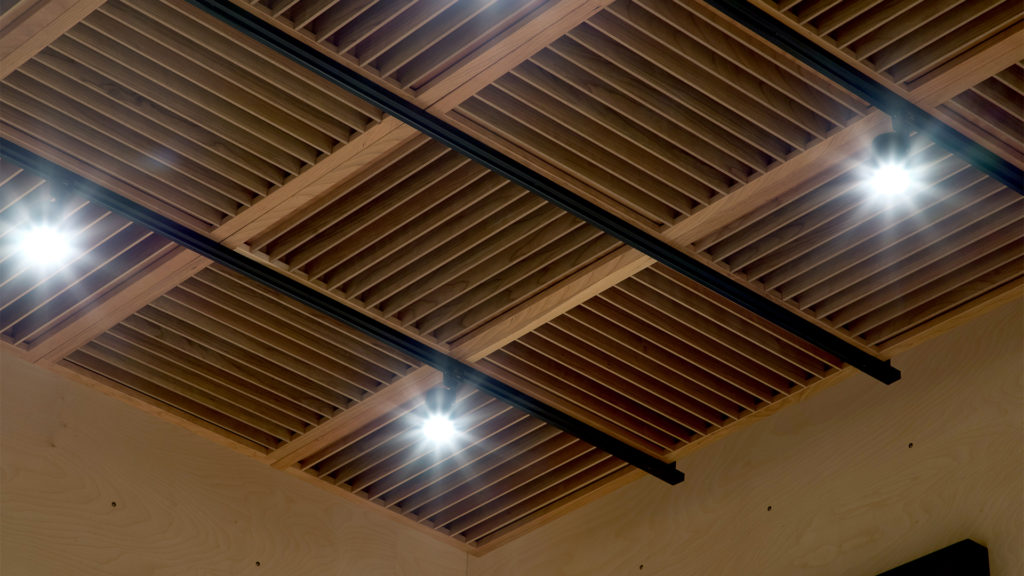
A quadratic, ceiling acoustic diffuser is just one surface area that can be treated with diffusion. You can quadratic diffusion on the four walls. Which wall or walls to place it upon first depends on the usage of the room. What are you going to do within this room? Are you going to listen to a multi channel rigg or two channel? Is it going to be for listening or recording sound energy?
Are you going to have a band playing within the room that has drums and other high energy producing instruments. All of these issues must be considered and addressed before introducing diffusion on a room surface area. In two channel systems, the front and rear wall work best. In a multi channel system, you must manage the reflections from the walls using diffusion. The ceiling and rear wall are a good start point for a multi channel system.
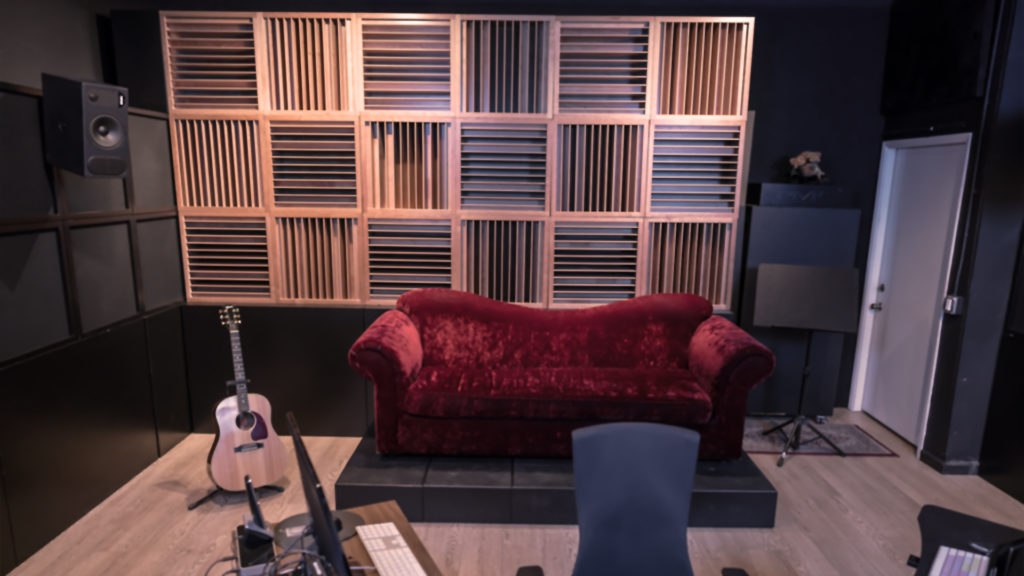
Diffusion is a technology to make a small room sound larger. It is a scientific instrument that must obey our current laws of physics. The room that a diffuser is placed within must meet rigid acoustical criteria before it is placed on any surface within the room. For example, reverberation times must be equal and balanced throughout the room. Decay rates must be linear with no spatial irregularities in response. There are many others.
Once you have selected your room usage and satisfied all the diffusion prerequisite requirements prior to diffusion you will then select the prime number that works best for your chosen usage and then cover that surface area with diffusion panels. Panels can be made in 24″ x 24″ sizes so layout and placement can be uniform and consistent.


